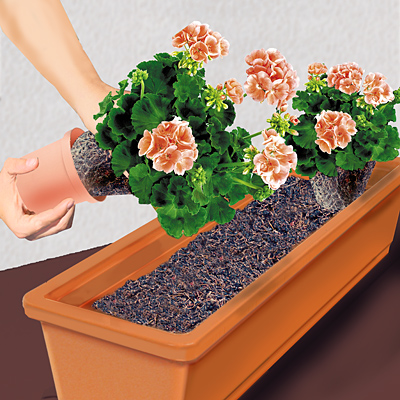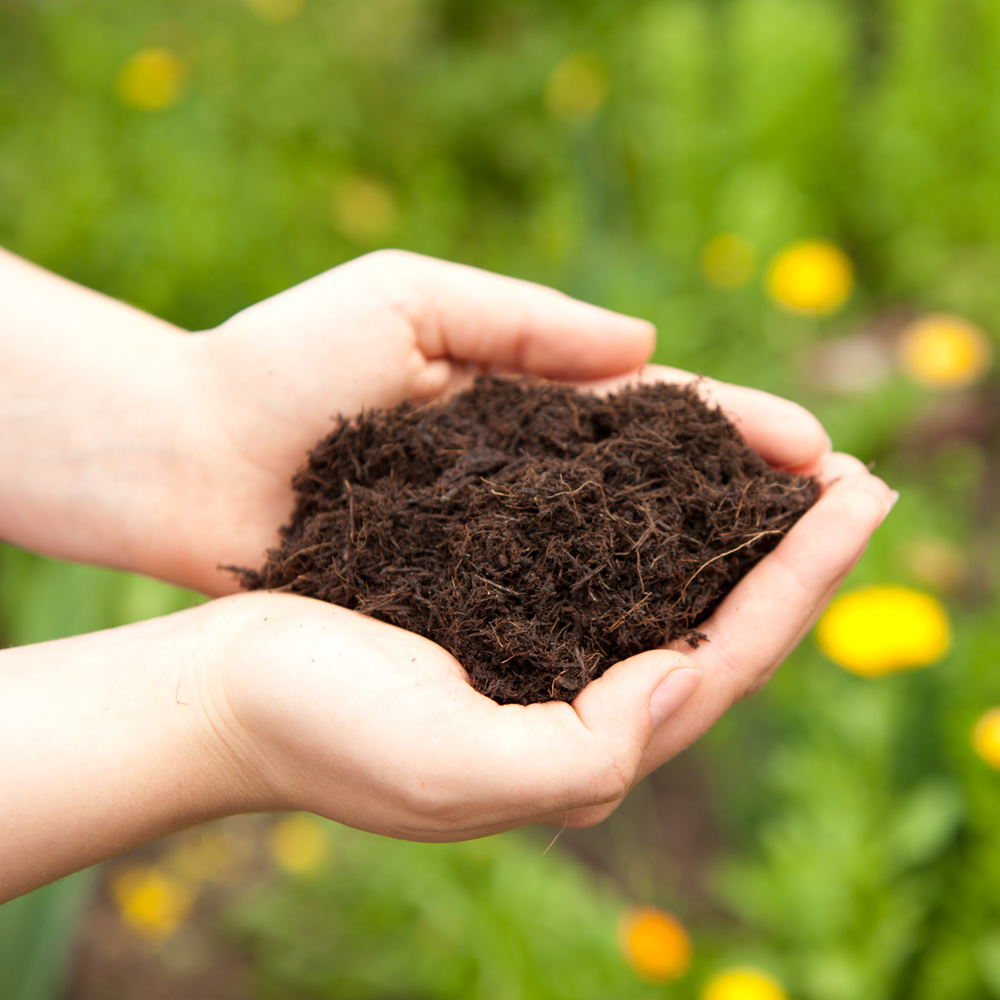Balcony planting
You can start planting up window boxes from mid-May. Or even earlier in sheltered areas.
Here’s how:
1. Cover the drainage holes in the box with a broken piece of plant pot, so that the soil does not wash out when watering.
2. Fill 1/3 of the box with a peat-free soil, specially designed to meet the needs of balcony and patio plants.
3. Thoroughly water the plants before planting.
4. Carefully lift the plant out of the pot.
5. Plant low and hanging varieties at the edge and higher varieties in the middle.
6. Once all the plants are in place, fill up the spaces in-between with the peat-free soil. Gently firm the soil and water.
Selecting a pot:
Consider the following points irrespective of the material:
- Tubs, flower pots and window boxes need openings on the bottom to allow water to escape and prevent waterlogging. You will need to drill holes in some containers after buying.
- The greater the volume or the more potting soil needed, the lower the risk of drought damage.
- Dark pots heat up more strongly in direct sunlight than light-coloured ones. This may even cause burn damage to the roots. Light-coloured pots are therefore more suitable on a south facing balcony.
- Irrigation aids or an automatic irrigation system protect your plants in summer and during holidays.
Soil without peat – saves important raw materials
Commercial potting soil often consists of 90% peat – a fossil raw material that grows back extremely slowly. Since peat cutting has a negative impact both on the environment and our climate, it is better to preserve natural resources. Peat-free soil is a good alternative – especially when used for plants on the balcony and terrace.
The peat in the moors has taken thousands of years to form. Moors are not only unique biotopes, they also store large amounts of CO2. All the moors worldwide store more CO2 than all the forests worldwide! If peat is removed, a lot of harmful CO2 is released. In view of these facts, it seems sensible to refrain from using peat in your own garden. Particularly as there are equivalent alternatives that are less harmful.







